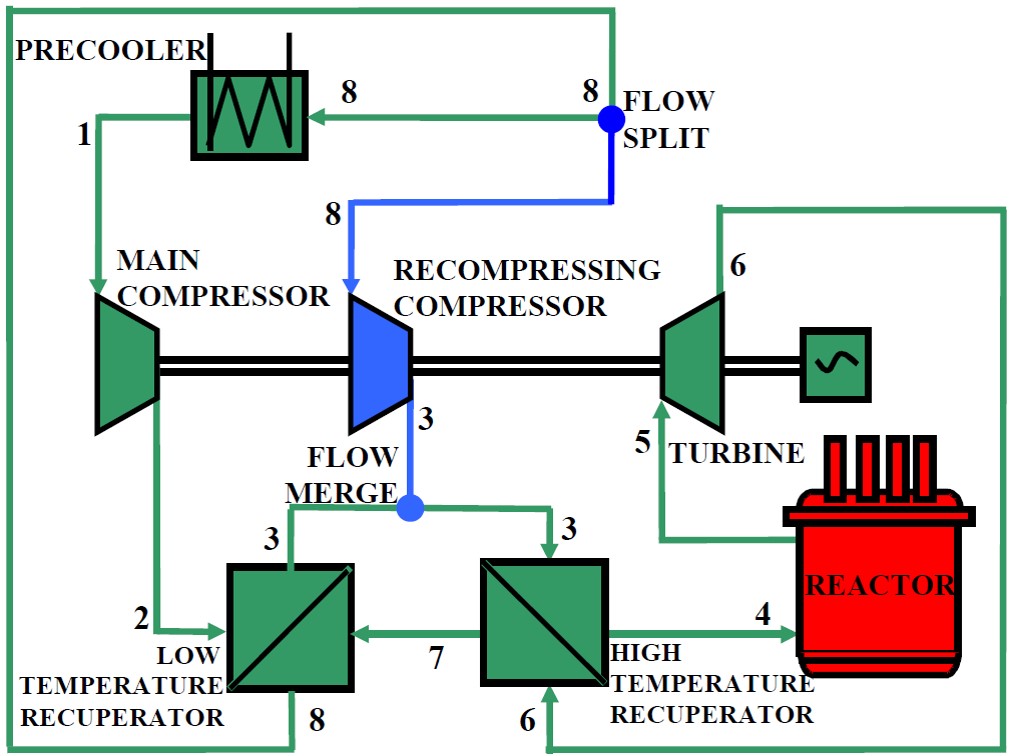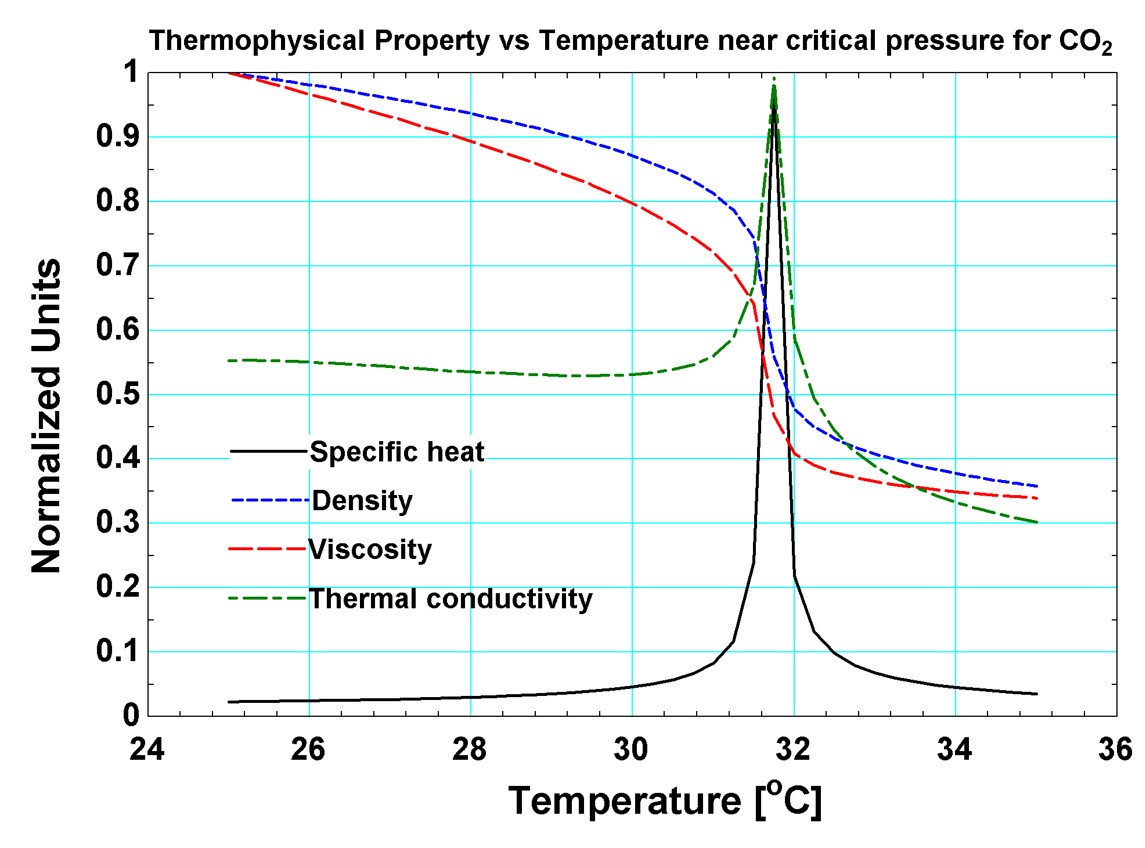Research ![]() Supercritical Carbon Dioxide
Supercritical Carbon Dioxide
Supercritical CO2 Brayton cycle has the potential for high efficiency in temperature range of interest for the heat sources like solar, nuclear or fossil and is also very compact, with potential for lower capital costs. While this cycle is very attractive due to its high efficiency, high power density, there are still several areas where progress is needed to make this cycle commercially viable. Our studies mainly focus on the recuperators used for recovery of waste heat from Brayton cycles and turbomachinery seals which are the major components in rotating machinery.
HEX Experimental Facility: The Specific heat changes are very high and the changes can occur over a small temperature differences near the critical point. Due to this high specific heat coupled with decrease in viscosity enhances the heat transfer characteristics of S-CO2. We study the thermal and hydraulic behavior of S-CO2 as it passes through different Printed Circuit Heat Exchanger designs and optimize the PCHE design to decrease the amount of pressure losses which will occur in the channel of the heat exchanger, but at the same time maximize the local heat transfer coefficient. To achieve this, we have built a HEX Experimental Facility which will be used to test wide range of PCHE designs. The facility also offers the flexibility to incline the Heat exchanger and look at the effect of gravity on the heat transfer and pressure loss characteristics of S-CO2.
Turbomachinery Experimental Facility: The Density changes are very high and the changes can occur over a small temperature differences near the critical point. Due to this high density compression in the cycle overall efficiency increases due to reduced back work Ratio (bwr). However, operating turbomachinery components in this high density regime may increase windage losses due to drag losses on the rotating surfaces. In order to minimize this loss generator cavity pressure can be reduced which will result in high leakage rates through seals. Our goal is to study the leakage rate and windage losses associated with several different seal geometries like Labyrinth seals, dry liftoff or brush seals, to understand some of the unique features of working with supercritical CO2 and large changes in properties associated by operating close to critical point by which we can try to find an optimum balance between leakage rates and Windage losses. A turbomachinery Experimental Facility is under construction right now, which will be used to test different orifices and seal configurations as they are subjected to large pressure differentials and very high shaft rotational speeds.
Computational Facility: Our aim is to improve the CFD modeling capability associated with S-CO2. The main issue associated with this is the highly variable properties and the issues associated with trying to deal with this in the CFD code. To achieve this we have implemented bicubic spline interpolation to model the fluid behavior in heat exchangers and turbomachinery. Our future efforts aim at developing better turbulence models to match the experimental data accurately.


